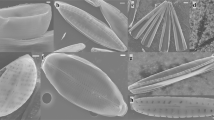Abstract
Larval settlement in the marine polychaete Hydroides elegans (Haswell) is induced by certain bacteria in marine biofilms. The exact nature of the settlement cue that larvae of H. elegans receive from these bacteria remains unknown. In this study, we revealed some properties of the bacterially derived larval settlement cue by investigating the larval settlement inductive activity of two bacterial strains after various treatments. These two bacterial strains, Roseobacter sp. and an α-subclass Proteobacteria, are highly inductive to larval settlement of H. elegans. The larvae responded similarly to Roseobacter and Proteobacteria in all the larval settlement bioassays, suggesting that the larval settlement-inducing substances produced by these bacteria may share common characteristics. First of all, the larvae did not settle in the seawater conditioned by the bacteria attached as a film or by the bacteria that were freely suspended in seawater. The results suggest that the putative larval settlement cue is not released into seawater and, therefore, should be associated with the surface of the bacteria. Secondly, formaldehyde treatment entirely eliminated the larval settlement induction activity of the bacterial films, and streptomycin treatment reduced the percentage of larval settlement on the bacterial films in a concentration-dependent manner. Since both treatments can kill bacteria with little damage to the surface chemistry of bacterial cells, the decline in larval settlement is suggested be due to a reduction of the viable bacterial population in the bacterial films. In fact, the reduction of larval settlement in the streptomycin treatments coincided with the decrease in viable bacterial populations in broth cultures containing respective concentrations of streptomycin. These results suggest that the viability of Roseobacter and Proteobacteria is important to their settlement induction effect. Since the larval settlement induction activity of the bacterial strains appears to correlate with their viability, we suggest that the putative larval settlement cue is derived from a metabolic pathway in the bacteria and that the cue is exported to and concentrated at the extracellular polymer matrix of the bacterial cell, at which the larvae establish contact with the bacteria. The larval settlement cue may be highly susceptible to degradation so that a metabolically active bacterial film is needed to maintain the putative cue at a concentration that surpasses the threshold for induction of larval settlement.
Similar content being viewed by others
Author information
Authors and Affiliations
Additional information
Received: 14 October 1998 / Accepted: 5 September 2000
Rights and permissions
About this article
Cite this article
Lau, S., Qian, PY. Larval settlement in the serpulid polychaete Hydroides elegans in response to bacterial films: an investigation of the nature of putative larval settlement cue. Marine Biology 138, 321–328 (2001). https://doi.org/10.1007/s002270000453
Issue Date:
DOI: https://doi.org/10.1007/s002270000453




